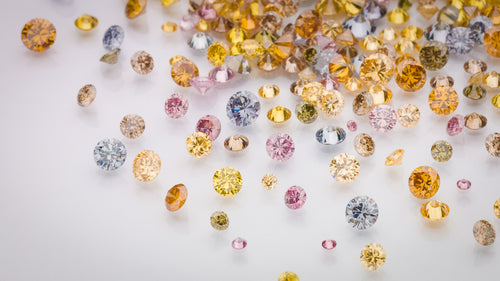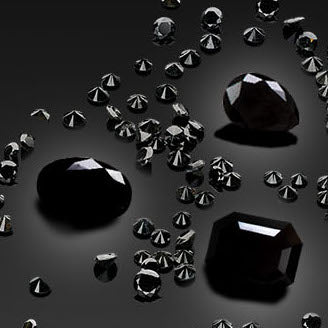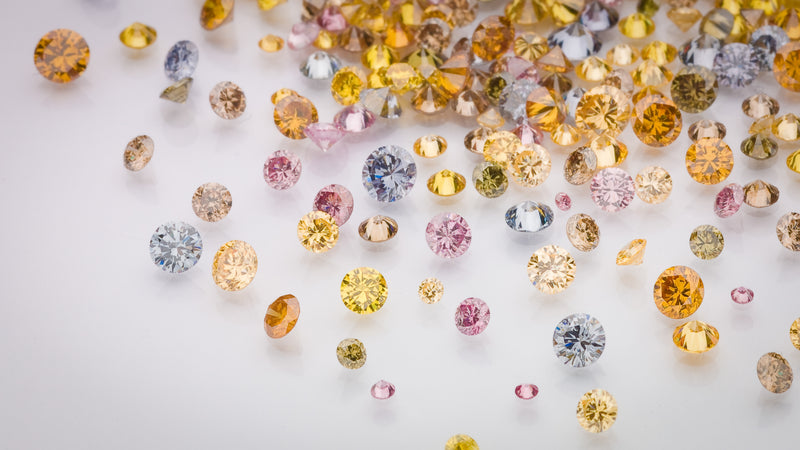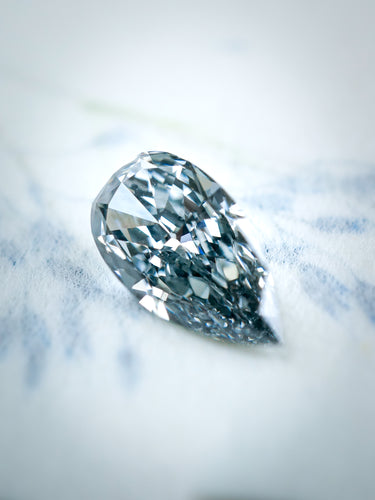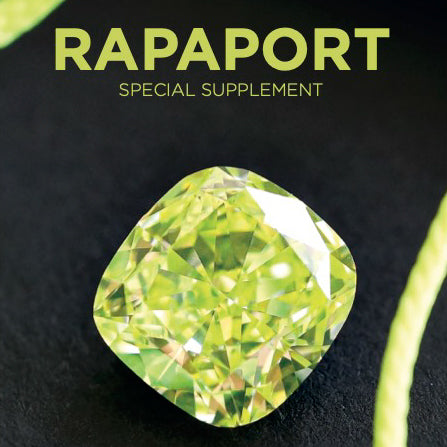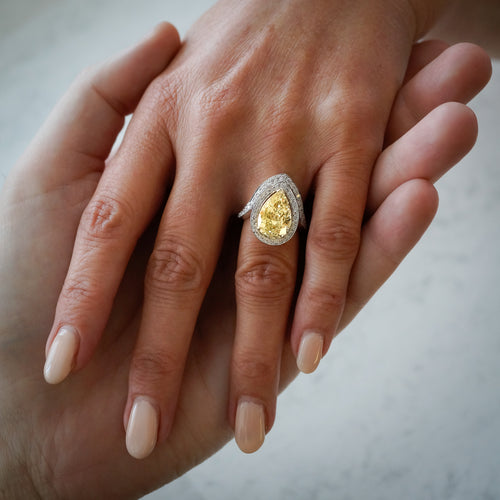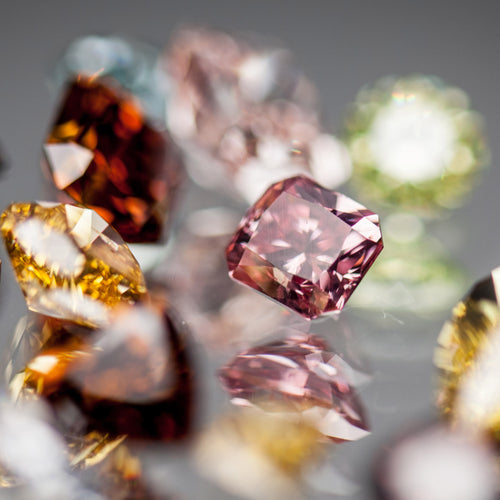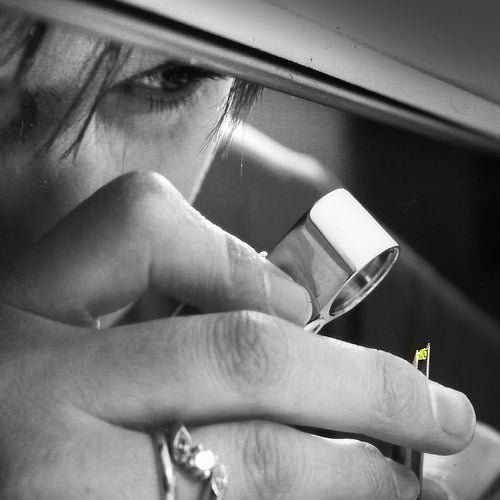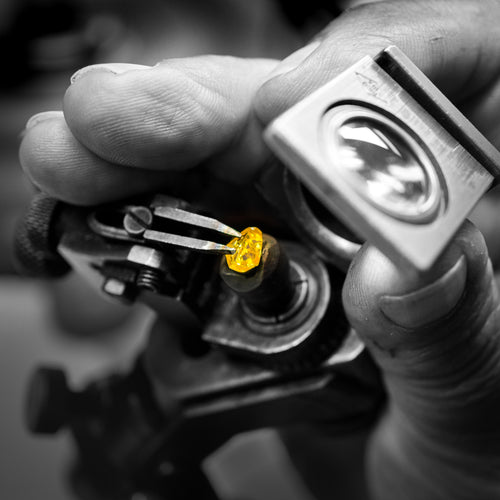The color in natural color diamonds is caused by different factors that were present during their formation, such as pressure, atoms of other elements, or natural radiation.
Yellow, Orange and Brown coloris due to the presence of nitrogen. Pure orange diamonds, with no traces of brown or yellow, are the rarest, and their color is believed to be the result of a combination of nitrogen presence and deformities in their structure.
Blue color is mainly due to the presence of boron. The higher the concentration of boron atoms, the more intense the color will be. For some greenish blue diamonds, the color can also be due to radiation, that was present in the earth during their formation. In very rare cases, grayish blue color has also been found to be caused by the presence of hydrogen.
Pink, Purple and some Brown colors are due to ‘graining’, which is a deformation of the crystal lattice in the diamond. This phenomenon can be seen in many diamonds coming from the Argyle mine in Australia, using a 10x magnifying glass. Depending on the level of graining, different shades will appear in the diamond. Scientists believe that this is due to the extreme pressures that the diamonds have been subject during their rising through the earth. It is also believed that this pressure is the reason why many of the diamonds in this color range, especially pink and purple ones, often have a lot of impurities.
Pure Violet diamonds, which are extremely rare, are the result of hydrogen presence in the diamond’s crystal lattice.
Natural Gray diamonds derive their color from presence of hydrogen atoms and sometimes small amounts of nitrogen.
Natural Green diamonds have a color that is due to gamma radiation that the diamonds have been exposed to in the earth during a very long time period, which is thought to possibly be several million years. This natural procedure causes atoms in the diamonds crystal structure to be displaced, which is the source of the green color. In some very rare cases, the presence of hydrogen atoms can cause a grayish green color to appear.
Natural Red diamonds derive their color from a process known as ‘plastic deformation’, which is a slipping or a distortion of the atomic lattice.
Natural White diamonds have a color that is thought to be the result of a presence of nitrogen and a high concentration of submicroscopic inclusions that scatter light, yielding their characteristic translucent ‘milky’ white color. The nature of these inclusions is unknown. Natural white diamonds are sometimes called 'opalescent’, since the dispersion of the light looks somewhat similar to that of opals.
Read more about the origin of color in our Diamond Encyclopedia.
